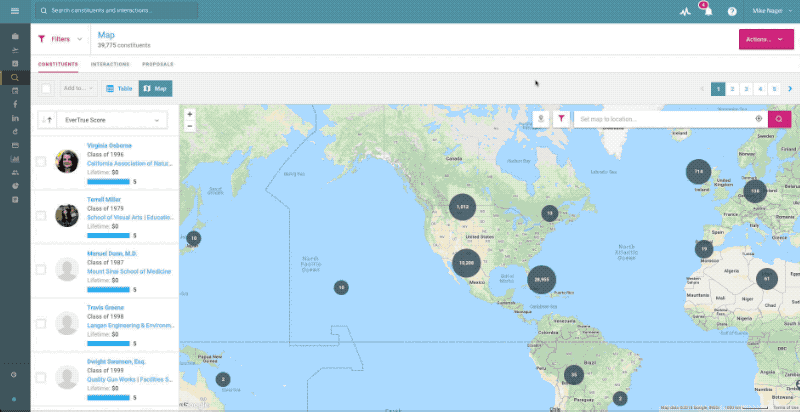Want to hear something exciting? College football is two weeks away!
When it comes to athletic fundraising there is no secret — football is king. Aside from the lucrative revenue that departments bring in through ticket and apparel sales, licensing rights, concessions, and television deals (more than $10 billion annually), the fall is also paramount for frontline athletic fundraisers. Here is how to make the most of it.
UNDERSTAND WHO’S COMING BACK TO CAMPUS
Alumni affinity towards your school is at an all-time high. Thousands of constituents return to campus for home football games, homecoming, and reunions. Don’t let those opportunities slip through the cracks.
Step one is simply understanding who is coming back to campus. Which games are major gift prospects attending? How many of your pipeline prospects have season tickets? Who is consistently coming to games but has never given a penny? This is all vital information that can take your department’s efforts to the next level.
Fall is not a time to only focus on the top of your donor pyramid. Having a comprehensive overview of who is in the stands, attending your tailgates and other organized events will allow you to engage your entire base and add more prospects into the giving funnel.
(In this video, Nick Fulton of the UNC Rams Club and Casey Steffan from the Virginia Athletics Foundation share tips for in-game donor management.)
TAKE ADVANTAGE OF AWAY GAMES
Your team spends half of its season on the road… and you should, too.
Away games provide gift officers the chance to connect with pockets of alumni around the country. Whether it’s a non-conference game 2,000 miles away or a mid-season battle against an in-state opponent, away games are a fantastic opportunity for fundraisers.
Having accessible and accurate data is vital. Use the game as a way to engage constituents who are unable to return to campus for events. Plan a happy hour the night before and bring plenty of giveaways to rebuild and/or strengthen affinity, and be sure to follow up.
This tactic is useful outside of football, too. With dozens of non-revenue generating sports also playing in games across the country, this strategy gives your team the opportunity to connect with alumni in places you wouldn’t travel to otherwise. Track who’s attending the game (you should be posing all events online) and connect with the best possible prospects.

CAPITALIZE ON BIG WINS – QUICKLY
Big upsets.
Postseason play.
Nationally televised games.
Your team’s big highlight landing on SportsCenter.
ALL provide tremendous opportunities for your fundraising team. Athletic advancement is a double-edged sword. While you get to ride the wave of donations from winning, you must also endure the “fans” that revoke philanthropic support when the results don’t materialize on the field. Sadly, most athletic development teams lack the flexibility to take advantage of the big wins, outside of a generic broad-stroke email blast to their entire solicitible base.
Most of you are aware of the popular examples like Gonzaga’s breakthrough in 1999, George Mason and VCU’s Final Four runs, and most recently, Loyola-Chicago’s historical March Madness victory. But, the impact those wins had on those programs lasted far after the final whistle blew.
The biggest key here is to understand who is excited about what your team just accomplished. Thousands of fans are interacting with the content you post online. Behind those likes and comments are major gift donors, leadership gift prospects, annual fund members and, unfortunately, an abundance of non-donors. Our research (as well as recent academic studies) shows that there’s a direct correlation between an alum’s online engagement and their likelihood of giving.
If you’re not paying attention to who is engaging with your content online, you’re missing a major opportunity to strengthen your participation percentages and annual giving dollars.
Interested in chatting about some of the strategies mentioned here? Give us a shout.
Kevin Massimino is a Business Development Rep at EverTrue. Prior to joining the team, he was a Development Officer at Bryant University and a Regional Sales Manager for College Hill. In seven years of collegiate athletic and advancement experience, he’s worked with over 300 colleges and universities. He can typically be found at The Kinsale in Government Center on Saturdays, cheering on his alma mater, Washington State University.
